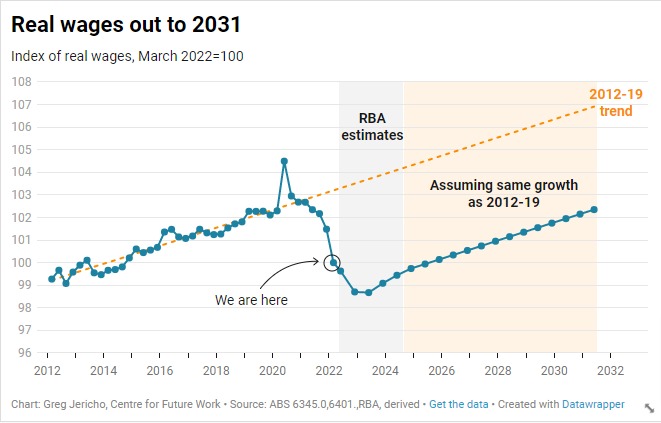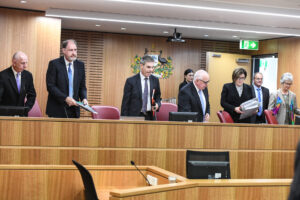The release of the March Wage Price Index confirms what a horror year it has been for workers. While inflation in the past 12 months rose 5.1%, wages grew just 2.4%. Even worse, in the past year the price of non-discretionary items rose 6.6%, meaning for those on low wages, who spend more of their incomes on essential items, real wages would have fallen even more than the 2.6% average fall.
Labour market policy director, Greg Jericho notes in his Guardian Australia column that the fall in real wages has been the worst since the introduction of the GST and in the first 3 months of this year real wages fell 1.5%.
So steep has been the fall that real wages are now back essentially to where they were at the time of the September 2013 election.
The fall highlights that talk about Australia having recovered from the pandemic ignores the most basic aspect of the economy – the living standards of workers from their wages.
The fall is such that even with the RBA’s estimates of solid wage growth recovery over the next two years, should Australia return to pre-pandemic trend real wages growth, it would take till 2031 to recover workers purchasing power back to the levels of 2020.
That would we a lost decade of living standards.

You might also like
Feeling hopeless? You’re not alone. The untold story behind Australia’s plummeting standard of living
A new report on Australia’s standard of living has found that low real wages, underfunded public services and skyrocketing prices have left many families experiencing hardship and hopelessness.
The continuing irrelevance of minimum wages to future inflation
Minimum and award wages should grow by 5 to 9 per cent this year
Go Home On Time Day 2025. As full timers disconnect, part timers are doing more unpaid overtime
New research by the Centre for Future Work at The Australia Institute has revealed a disturbing new twist when it comes to unpaid overtime in Australia.

